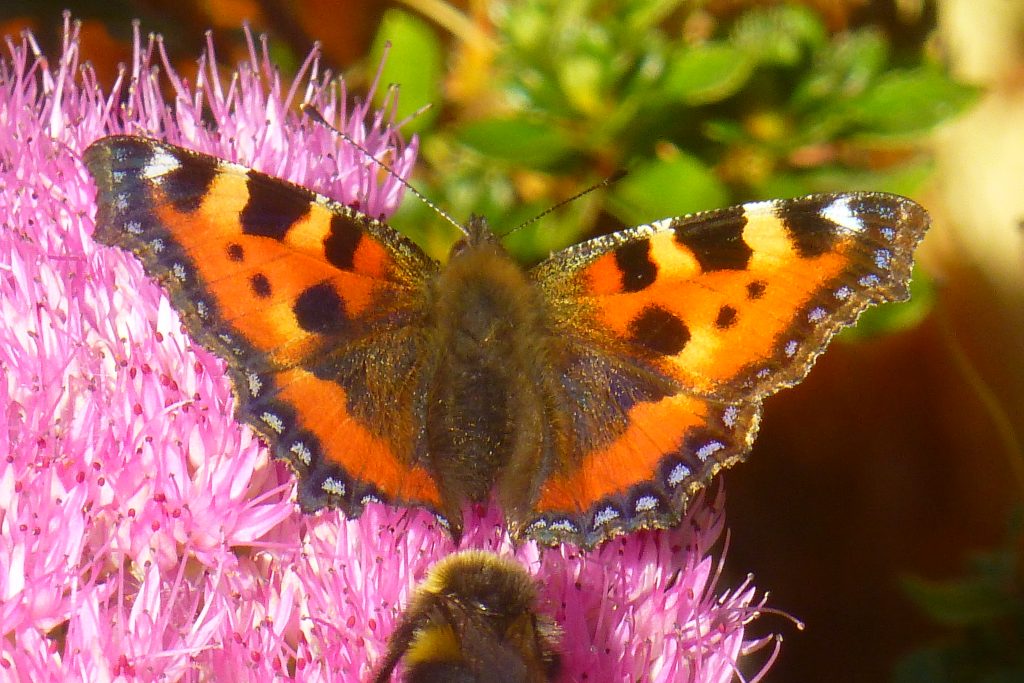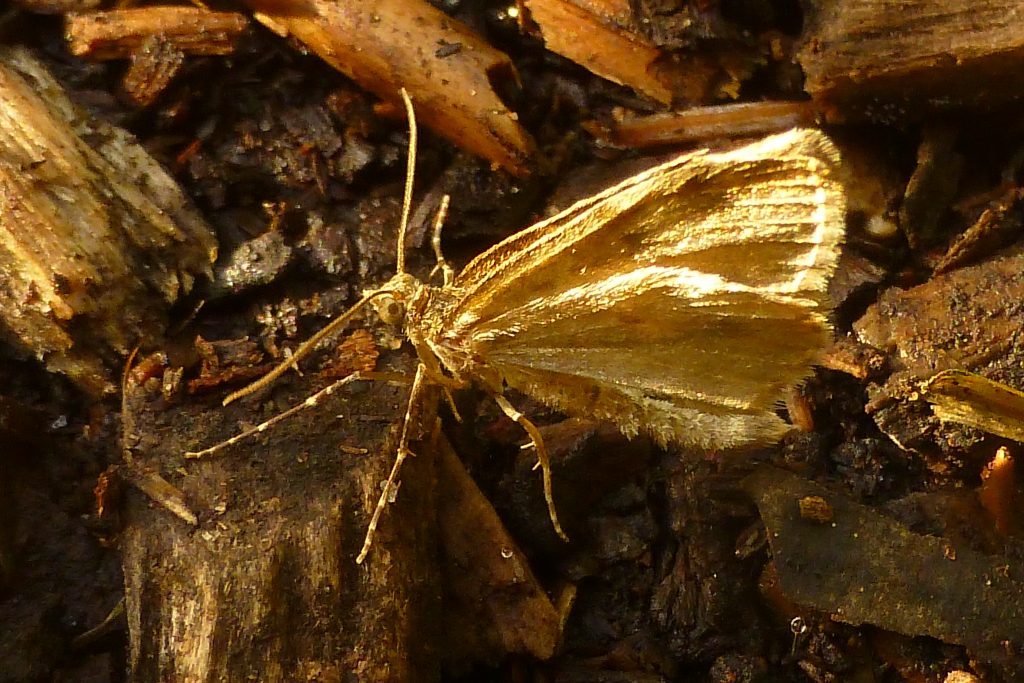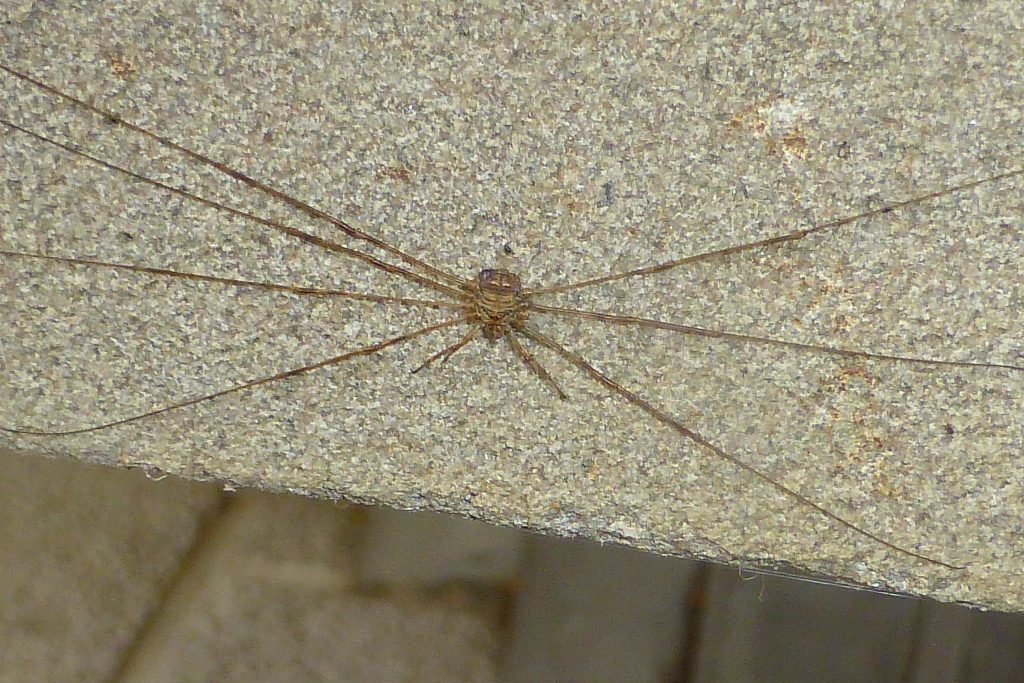October continued the long quiet dry spell in the first half of the month with unseasonally warm days. The second half of the month was a little more unsettled with a series of Atlantic depressions bringing spells of mostly light or moderate rain. On one otherwise beautiful sunny day (22nd) the Garden was closed all day because of the strength of the wind. No fewer than eleven species were added to the Garden’s list, bringing it up to 788.
Birds Thirty-three bird species were recorded at RBGE in October. There was another Nuthatch record (1st), bringing hope that this species might eventually colonise what would seem perfect habitat for it. Buzzard was recorded twice (1st and 8th). Grey Wagtail visited the Pond area on at least three dates (10th, 19th, 28th). More skeins of Pink-footed Geese flew over the Garden (19th, 20th, 29th). The winter’s first Redwing arrived (9th) and there was a small influx of Mistle Thrushes. The full list of species recorded in October was: Blackbird, Blackcap, Black-headed Gull, Blue Tit, Bullfinch, Buzzard, Carrion Crow, Chaffinch, Dunnock, Feral Pigeon, Goldfinch, Great Spotted Woodpecker, Great Tit, Greenfinch, Grey Heron, Grey Wagtail, Herring Gull, Jackdaw, Long-tailed Tit, Magpie, Mallard, Mistle Thrush, Moorhen, Nuthatch, Oystercatcher, Pink-footed Goose, Redwing, Robin, Siskin, Sparrowhawk, Tree Creeper, Wood Pigeon, Wren.
Insects and other invertebrates: Three butterfly species were recorded in October, all ‘vanessids’, namely Comma and Small Tortoiseshell (both on 1st) and Red Admiral (2nd, 12th and 13th). The latter were present in nothing like the large numbers seen last year. There were four new macromoth records for the Garden in October, of which the most notable was Hummingbird Hawkmoth around Colchicum flowers in the Rock Garden on 1st. The others were three rather dull brownish species. Dingy Shell, easily recognised because when at rest it holds its wings upright like a butterfly, rather than outspread or along the body, was seen on the ground by the Pond (14th), while Autumnal Moth and Winter Moth were seen together on the wall outside the back door of the Herbarium (23rd). Among the mines of 16 leaf-mining moths found in October, no fewer than four were new Garden records, all members of the genus Stigmella: S. incognitella (apple, 5th), S. glutinosae (alder, 5th), S. tityrella (beech, 8th) and S. poterii (bramble, 9th & 23rd). Unsurprisingly with the transition from summer to autumn in full swing, the diversity of hymenopteran species was much less than in September with only 13 species recorded. However, those included two queen Tree Bumblebees in the alpines area on 25th. Only five species of hoverflies were recorded: Marmalade Hoverfly, Common Banded Hoverfly, Sericomyia silentis (1st) and the drone flies Eristalis tenax and Eristalis pertinax. The mines of nineteen leaf-mining flies were found, Rhopalomyza lonicerae (28th) being a new Garden record. Two shield bug species (Gorse Shield Bug, Hawthorn Shield Bug) were seen. Larch Ladybird was a new Garden record (25th) and 7-spot, Orange and Pine Ladybirds were also seen. An earwig was seen on 30th. The final new Garden record of the month was the alien harvestman species Dicranopalpus ramosus (29th). This native of north Africa has spread through the UK rapidly since 1957 and reached Scotland in 2000.



